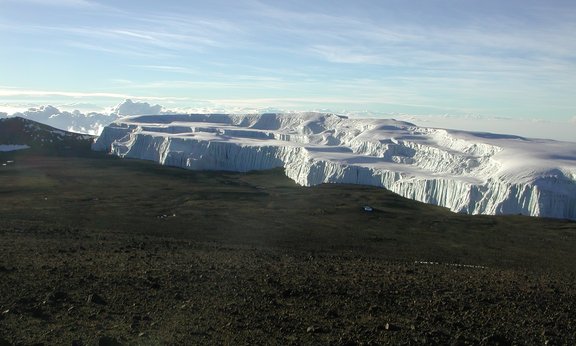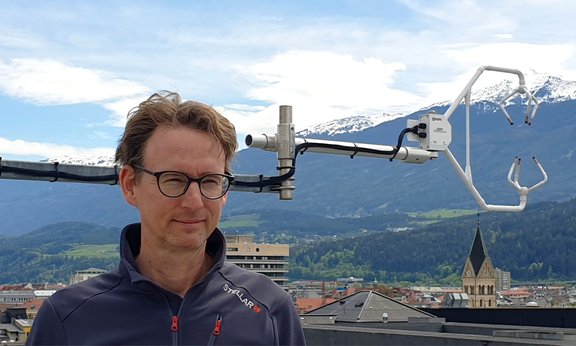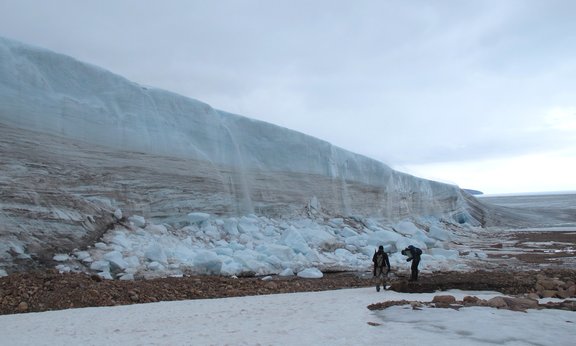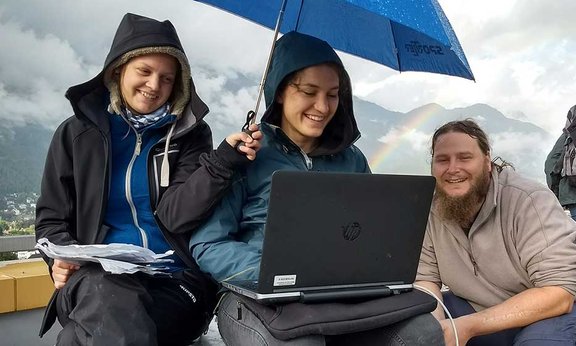Master’s Programme Environmental Meteorology
You want to learn to understand and analyse the Earth's atmosphere and its interactions with other parts of our environment in an interdisciplinary way?
The students of this Master’s Degree Programme observe, understand and model the Earth’s atmosphere and its interactions with other parts of our environment.
In courses, labs and field work, students acquire an interdisciplinary set of tools and skills from the fields of atmospheric science, hydrology, agricultural and forest meteorology, energy meteorology, chemistry, measurement technologies and data science.
Study code
UC 066 615
Admission
Admission to the joint study program is governed by the cooperation agreement between the universities of Innsbruck and Trento. Details of the admission and selection procedures are provided on this website of the University of Trento, which administers the joint program.Details of the admission and selection procedures are provided on this website of the University of Trento, which administers the joint program: https://international.unitn.it/environmental-meteorology/application
FAQ
Graduates are able to characterize physical and chemical processes and their interactions in the atmosphere and environment based upon a profound knowledge of theory and observational tools. They can critically evaluate the output of numerical weather prediction models and make weather forecasts. They have the skills to analyze and discuss scientific literature and to present scientific results in writing and orally.
Graduates in Environmental Meteorology have acquired advanced knowledge and methodological skills in the area of meteorology/atmospheric sciences in general, and in particular aspects in relation to environmental topics (e.g., dispersion of air pollutants, atmospheric chemistry, hydrology, agricultural and forest meteorology, energy meteorology). They are able to use their knowledge and skills to work out methodologically sound solutions, and provide guidance for society in environmental problems in the mentioned areas.
The Master in Environmental Meteorology also prepares for a further scientific career. Graduates can critically evaluate scientific and engineering approaches and advance certain areas within Environmental Meteorology.
They can communicate their knowledge and results from their work to a wide range of audiences. They can critically evaluate results of their own work and those of others in their field and have sufficient knowledge of related disciplines (e.g. chemistry, statistics) to - if necessary - call in and understand experts in these fields.
Studying at both an Austrian and Italian university in English leads to the development of a heightened sensitivity and accompanying skills to deal with cultural and socio-economic aspects of scientific or technological solutions.
The Master Environmental Meteorology qualifies graduates to work, for example, in the public administration (e.g., environmental office and corresponding public institutions), meteorological services, the private sector (e.g., energy demand and predictions for hydro, wind and solar power, agriculture, forestry, hydrology) and other related areas where aspects of environmental meteorology are relevant.
Graduates tracking: Shows which occupational fields students enter after graduation
Faculty of Geo- and Atmospheric Sciences Examination Office Information for students with disabilities
Curriculum
From the field

Afrikas Gletscher gehen stark zurück
Die wenigen Gletscher Afrikas schwinden einer Studie zufolge im Zuge der Klimakrise rasch – und könnten bis Mitte des Jahrhunderts verschwunden sein. Auf dem fast 6.000 Meter hohen Kilimandscharo in Tansania, dem etwa 5.300 Meter hohen Mount Kenia in Kenia und dem rund 5.100 Meter hohen Ruwenzori-Gebirge an der Grenze zwischen Uganda und der Demokratischen Republik Kongo haben sich die Eisflächen allein seit den ersten Jahren des 21. Jahrhunderts mehr als halbiert.

Luftgüte: Lehrmeinung muss revidiert werden
Langzeitmessungen im Stadtgebiet von Innsbruck zeigen, dass der Anteil von bodennahem Ozon in Atmosphärenmodellen tendenziell überschätzt wird. Als Konsequenz muss eine für die Luftgüteprognose grundlegende Lehrmeinung für den urbanen Raum neu interpretiert werden. Die Messungen eines internationalen Teams um den Atmosphärenforscher Thomas Karl belegen außerdem, dass direkte Stickstoffdioxid-Emissionen überbewertet werden.

Grönlands Eiswände als Frühwarnsystem fürs Klima
Gletscher, die an Land durch senkrechte Eiswände begrenzt sind, sind rar. Diese Eiskliffe reagieren besonders sensibel auf Veränderungen von Umweltbedingungen. Forschungsteams aus Tirol und der Steiermark untersuchen die Eisformationen an einem Standort hoch im Norden Grönlands. Sie wollen anhand der Veränderungen der Gletscherwände Rückschlüsse auf die Entwicklung des arktischen Klimas ziehen.

CO2-Emissionen in Innsbruck stark zurückgegangen
Luft-Messungen am Atmosphärenobservatorium der Universität Innsbruck zeigen, dass die Kohlendioxidemissionen in Westösterreich seit 2018 um rund 20 Prozent gesunken sind. Die Emissionen liegen damit deutlich unter den von verschiedenen Modellen prognostizierten Werten. Beobachtungsdaten werden zunehmend wichtig, für die Beurteilung der Plausibilität von Treibhausgasbilanzen.
Related studies

Atmospheric Sciences (Master)
Master of Science

Chemical Engineering (Master)
Diplom-Ingenieur*in


















